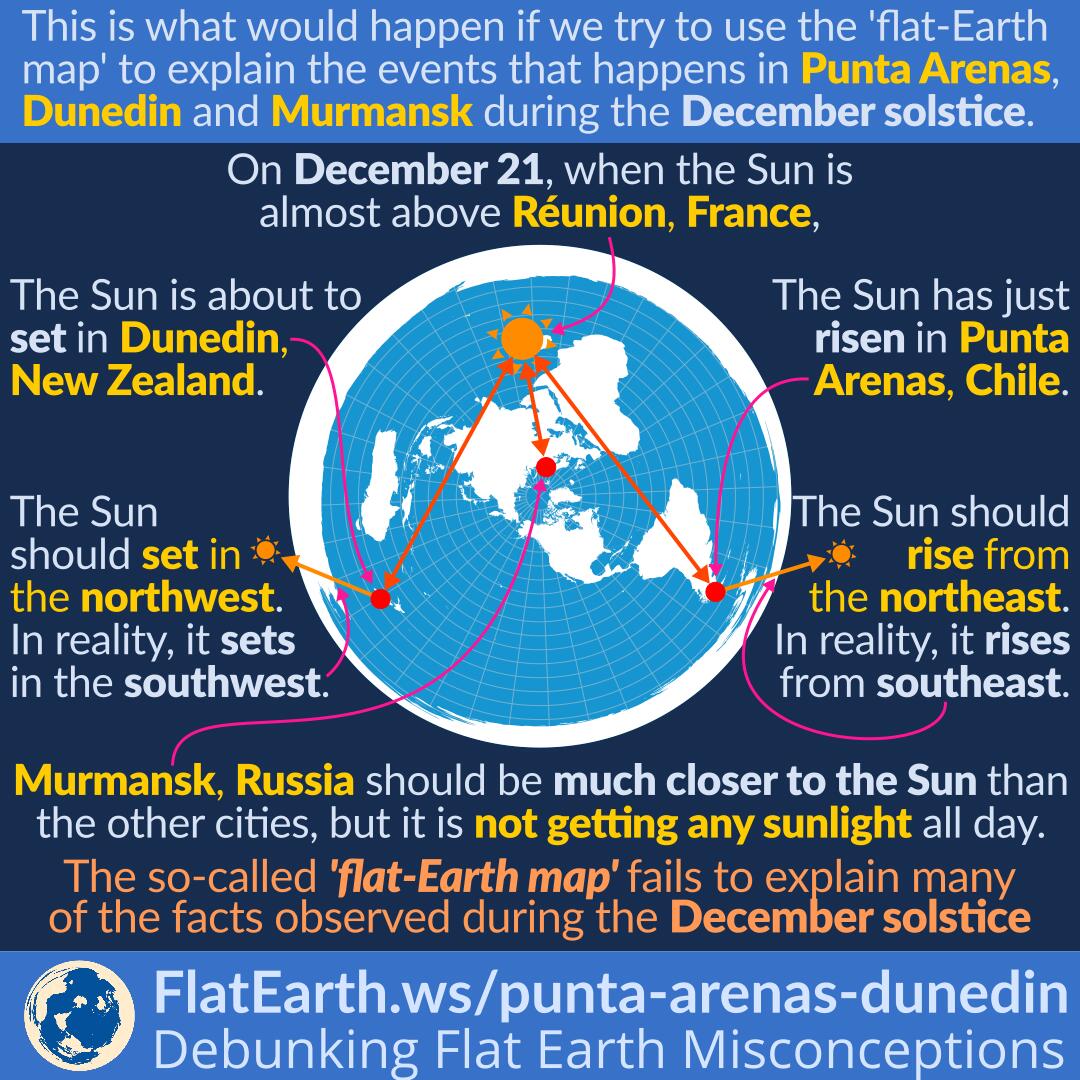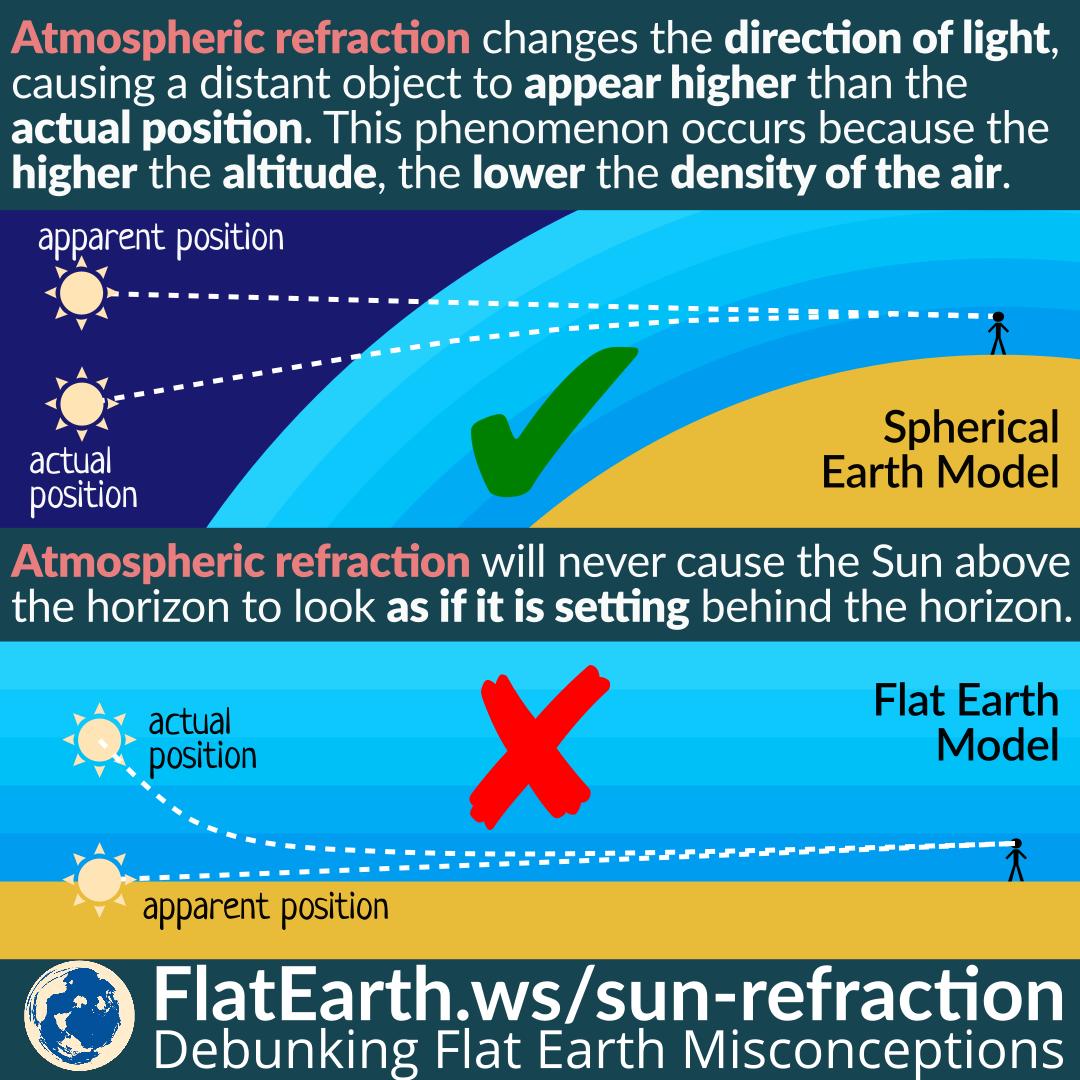During the December solstice, on December 21, the Sun reaches its southernmost point. During this time, the northern parts of the Earth are experiencing the peak of winter, and conversely, the southern regions are experiencing the height of summer.
Most flat-Earth denominations picture the sun shining like a spotlight, and they can’t explain what is happening in the southern parts of the Earth during the December solstice.
Continue reading “The Cities of Punta Arenas, Dunedin, and Murmansk During the December Solstice”





